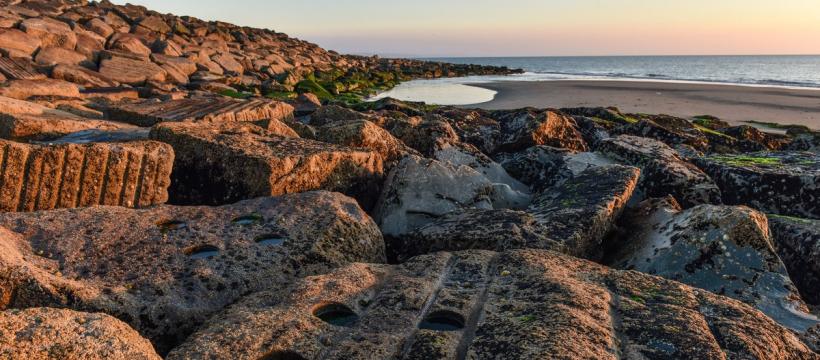
New EU project to enhance coastal infrastructure in Wales and Ireland
Universities in Wales and Ireland are joining forces to investigate how coastal defences and renewable energy schemes can be improved by more eco-friendly designs.
More than €3m of EU funds is being invested in the Ecostructure project, which will develop and trial new methods to enhance the quality of coastal structures, including sea-walls and tidal lagoons, through more ecologically-sensitive design.
The project has been funded through the Ireland-Wales co-operation programme, which is helping to strengthen economic links and collaboration between the two countries.
Welsh Government Finance Secretary Mark Drakeford said:
“Cross-border projects between Wales and Ireland are important because they bring together expertise from both nations to meet shared challenges and opportunities from our Irish Sea border.
“Aberystwyth University and its partners will benefit from more €3m of EU funds to deliver this project. It’s another example of the advantages to Wales of continued access to EU co-operation programmes after the UK leaves the EU.”
The investment in Ecostructure will help to modernise future coastal development, create new business opportunities for local companies and improve the protection of wildlife and local ecosystems.
The project will be led by Aberystwyth University, in collaboration with University College Dublin, Bangor University, University College Cork and Swansea University.
Dr Joe Ironside, from Aberystwyth University’s Institute of Biological, Environmental and Rural Sciences, said:
“In response to increased storminess and rising sea levels, as well as the need for sustainable renewable energy generation, hard coastal infrastructure is likely to increase along Irish Sea coastlines.
“In Wales and Ireland, we currently rely on man-made sea defences to protect many of our most important cities, towns and transport links from floods and storms.
“These artificial structures tend to provide poor habitats for wildlife, but the eco-engineering we’ll be trialling through this project has huge potential for improving coastal infrastructure and better protecting ecosystems and marine life.”
